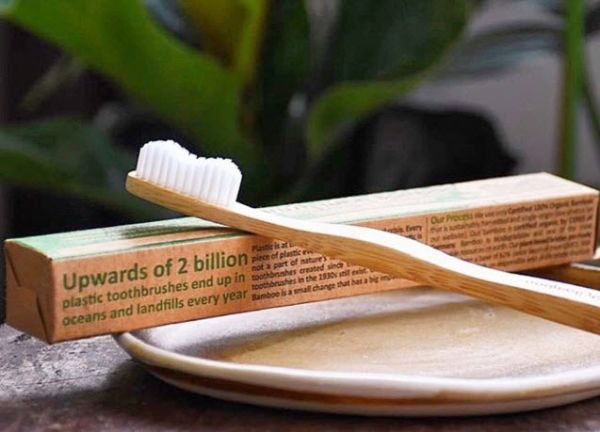A bamboo toothbrush deconstructed: bamboo handle, paper packaging box, plant-based nylon bristles and plant-based wrapper. It also comes with disposal instructions.
“Bamboo handle and paper box are compostable.” Easy. “Nylon bristles are not compostable but can be recycled…ask your local recycling facility about the best way to recycle the bristles.” More difficult, but still possible. “Plant-based wrapper is compostable in commercial facilities only (ASTM D6400). Appropriate facilities may not exist in your city.” Evidently, this might not be possible at all.
Given labels advertising this brush’s sustainable and biodegradable qualities, as well as the seal of USDA biobased certification, this fine print on the packaging is jarring. Doesn’t “biobased” mean the toothbrush will eventually decompose on its own no matter its environment? This is the type of worry-free, bioplastic future we are moving towards, right?
Bioplastics are more complicated than their public image suggests. “Bioplastic” is an umbrella term for a plastic material that is biobased, or made partially from biomass like corn or cellulose, biodegradable, or able to break down into organic components, or both. A caveat, however, is that biobased materials are not necessarily biodegradable, nor are all biodegradable materials guaranteed to biodegrade. Bioplastics that end up in anaerobic landfills, cold oceans, or even among recyclable plastics fail to degrade and may do the same harm, disrupting the same natural processes as do traditional plastics. In cases like the toothbrush’s plant-based wrapper, even materials listed as biodegradable require extremely specific conditions like those found in industrial composting facilities in order to break down properly, and this proper disposal may not be feasible for the common consumer. So that biobased plastic bag that is reassuringly printed green with images of leaves? It might be more for your psychological benefit than for the benefit of the environment.
Continue reading at Columbia University Earth Institute
Image via Columbia University Earth Institute


